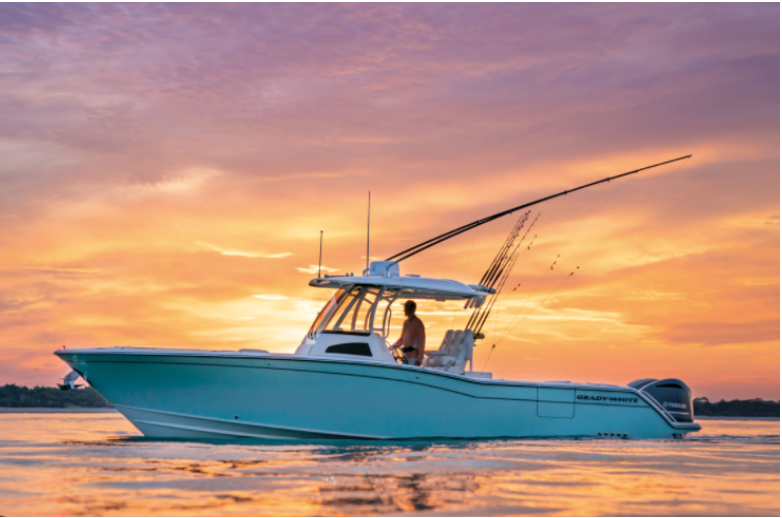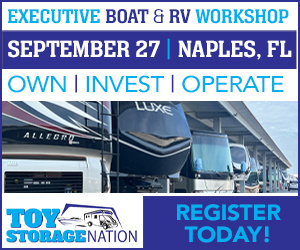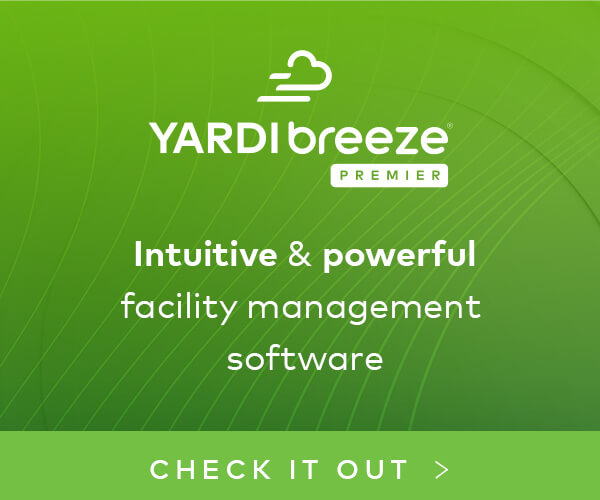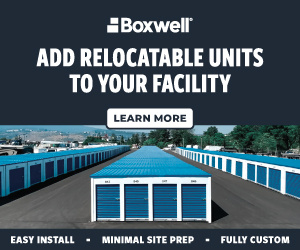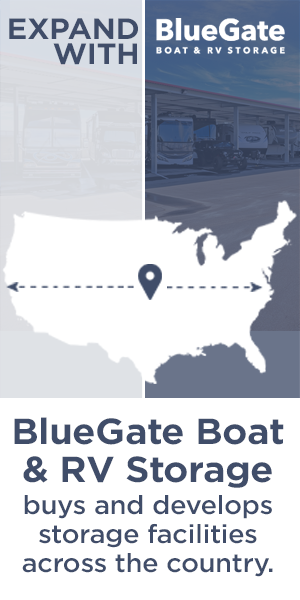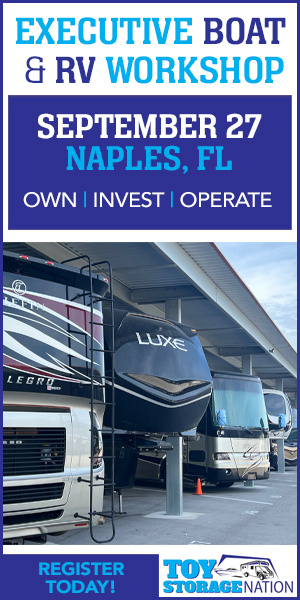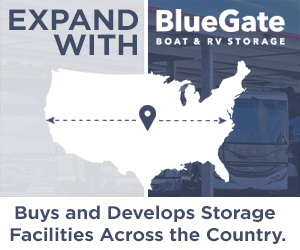Part Three: The facts all point toward a bright future for the expanding RV and boat storage market
In part one of this three-part series, we introduced the premise that as more and more Americans are drawn to outdoor adventures, more recreation vehicles are purchased, leading to a growing demand for top-grade RV and boat storage facilities, known as Class A facilities. Part two discusses the benefits of operating Class A storage and takes a look at how ancillary services can add value for customers and operators. This article spills more statistics and reveals more evidence that there is an ever-increasing need for Class A storage.
This forecast is derived from a recent report—the U.S. Bureau of Economic Analysis—released in November 2022. The report examines trends in outdoor recreation across the United States, especially for purposes of determining how much this sector contributes to the nation’s gross domestic product.
The report revealed that outdoor recreation and related businesses contributed a whopping $862 billion to our nation’s economy, which is a much higher amount than the entire U.S. mining industry, and more than 50% the contribution of the agricultural industry.
The optimism doesn’t end there, though. The industry was worth an additional jaw-dropping $173 billion more over the previous year—representing an 18.9% increase. (Note: The nation’s overall economic growth for the same period was a mere 5.9%.) The result is what Outdoor Magazine is calling “an economic powerhouse that has completely bounced back from its 2020 dip” (when COVID first prevented people from traveling at all).
Mapping it out
Where states are magnets for outdoor recreation? Toy storage operators and developers can sigh in unison: The report indicated growth in all 50 states. But, of course, some faired more than others. The brightest spots on the map include the West and Southwest, with Alaska, Arizona, Montana, New Mexico and Wyoming all tagging in at about 17% to 18% growth, and Hawaii taking home the prize with 23% growth. Eastern states finishing strong included South Carolina, Illinois, Indiana, Vermont and Rhode Island.
Even better news exists for toy storage nation: While outdoor activities rose across the board, “motorized recreation” breezily outranked “human-powered” recreation. And, according to Outside Magazine (as well as any other reputable source), “Motorized recreation, with its far pricier toys, is where the real money remains.”
The highest ranked outdoor sports are a jackpot for toy storage operators. The boating and fishing sector was named the biggest economic contributor for the year, followed closely by RVing, with hunting and trapping trailing slightly behind, and climbing, hiking and camping bringing up the rear for the top four winners. The report indicates that these findings have remained nearly the same for the past five years.
As an added bonus, the nonprofit Outdoor Foundation, which is dedicated to promoting outdoor access across the country, counted a 26% increase in people experiencing outdoor activities since the onset of COVID in spring 2020. The base population of outdoor enthusiasts is expanding, as well, welcoming more women and Latino populations.
Piece it altogether, and it’s quite evident that the outdoor recreation economy is steadily gaining strength, giving those who have an interest in owning and operating a toy storage facility a big dose of optimism for running a successful business.
Arming yourself with knowledge is the best way to ensure your future success in serving the RV and boat storage industry. Below are fast facts and statistics on boating and RVing. The data represents numbers across the country. Contact local officials within the area, city or county in areas that you are considering for building a toy storage facility to crunch numbers more specific to your business and determine if you’re targeting a location that’s ready to blossom into a gangbusters toy storage facility.
Boating Statistics and Facts
- New boat sales surged 40% during the COVID pandemic.
- 100 million Americans go boating each year.
- 11.9% of U.S. households own a recreational boat.
- Millennials make up 31% of boater demographics.
- Americans spend $49.3 billion on boats, marine products, and services each year.
- 61% of boat owners have an annual household income of less than $100,000.
- Average ownership cost of a new boat is $5,000-$8,000 per year.
- Open powerboat is the most popular type of boat in the United States.
- 95% of recreational boats are less than 26-feet in length.
- Average boat in the country is operated 54 days per year.
- According to new and used boat registrations tracker Info-Link Technologies, there was a 35% increase in first-time owners.
- States with the highest percentage of household boat owners were Maine (33.1%), Alaska (32.2%), New Hampshire (29.7%), and Minnesota (27.8%).
- Conversely, states having the lowest percentage of households that own boats were Hawaii (5.0%), Nevada (5.3%), New Mexico (6.0%), and New Jersey (6.1%).
- Two or more boats are owned by half of the boat-owning households in Maine, Massachusetts, New Hampshire, New York and West Virginia.
- Historically, the average U.S. boat owner age has been 58 years. Thanks to younger people entering the recreational boating field, the average age of a recent first-time boater is now 46 years.
- According to the National Marine Manufacturers Association millennials boat ownership statistics, millennials make up 31% of boater demographics.
- The major boating demographics distribution is as follows:
- 31% Millennials
- 37% Generation X
- 28% Baby Boomers
RV Statistics and Facts
RV wholesale shipments were projected to reach 498,800 units by year-end 2022 and 419,000 units in 2023, according to the Fall 2022 issue of RV RoadSigns, the quarterly forecast prepared by ITR Economics for the RV Industry Association.
“This new forecast projects 2022 to be the second- or third-best year on record for RV shipments and projects 2023 to be in line with our 10-year average, which is considerably above our 20 and 30-year numbers,” said RV Industry Association President & CEO Craig Kirby. “For decades our industry has seen ebbs and flows, yet we’ve seen continuous overall shipment growth for more than 40 years as RVing remains a popular option for consumers who are looking for the freedom to travel while also controlling their costs.”
- The RV industry has blossomed during COVID.
- RVs provide an excellent opportunity for people to enjoy vacations while still adhering to social distancing.
- The RV industry is still on track to build more than 600,000 RVs in 2022.
- Over 11% of US households headed by 35 to 54-year olds own an RV.
- There’s significant growth among 18 to 34-year-old buyers, who now make up 22% of the market.
- A typical recreational vehicle owner is 48 years old, married, and has an above-average household income.
- Millennials have been purchasing and renting RVs more than ever before.
- More than 9 million households in the United States own recreational vehicles.
- According to the RV Industry Association, 46 million Americans plan to take an RV trip in the next 12 months.
- An incredible 9.6 million households intend to buy an RV within the next five year.









